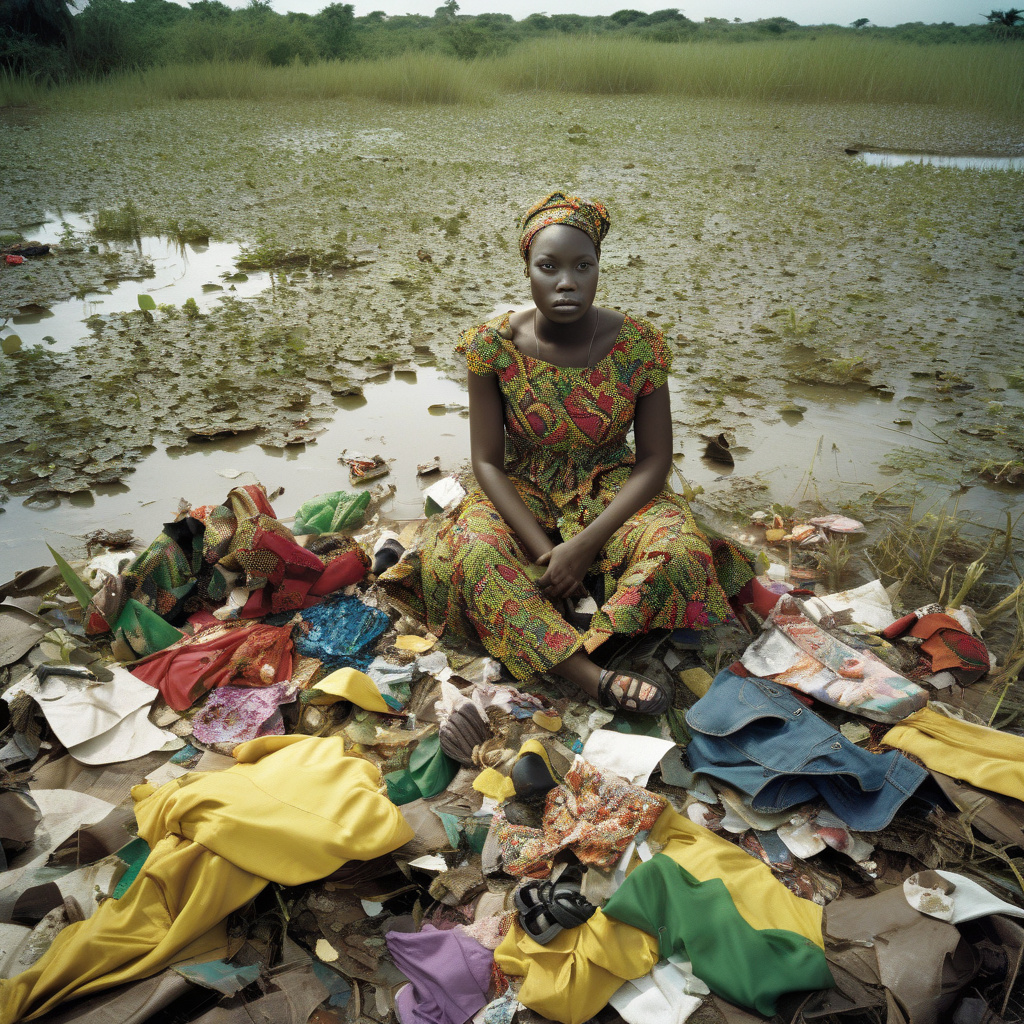Fashion Castoffs Dumped in Protected Wetlands in Ghana
Shipments of unwanted old clothes from UK and European brands have turned a conservation site into a dumping ground, according to a new investigation. This shocking revelation sheds light on the dark side of the fast fashion industry and its impact on the environment in developing countries like Ghana.
The practice of sending used clothing, often referred to as “dead white man’s clothes,” to African countries has been going on for decades. While some may see it as a charitable act, the reality is far from it. These clothes are often of poor quality and end up flooding local markets, undercutting the sales of locally made garments and harming the local economy.
In the case of Ghana, the arrival of these fashion castoffs has taken a more sinister turn. Instead of being properly processed or recycled, many of these clothes end up in landfills or, as the investigation found, in protected wetlands. These wetlands are crucial ecosystems that provide habitat for a wide range of plant and animal species, some of which are endangered. The dumping of clothes not only pollutes the land and water but also disrupts the delicate balance of these ecosystems.
The impact of this reckless dumping goes beyond environmental damage. It also has social and economic implications for the local communities that rely on these wetlands for their livelihoods. Fishing, farming, and tourism are just some of the industries that depend on the health of these ecosystems. By allowing fashion castoffs to desecrate these areas, we are not only harming the environment but also the people who depend on it.
This is not just a problem for Ghana; it is a global issue that demands immediate attention. Brands in the UK and Europe must take responsibility for the entire lifecycle of their products, including what happens to them after they are no longer in fashion. This means investing in sustainable production methods, designing clothes that last longer, and implementing take-back programs to ensure that old clothes are properly recycled or disposed of.
Consumers also have a role to play in addressing this issue. By supporting brands that prioritize sustainability and ethical practices, we can send a powerful message to the fashion industry that we demand change. Shopping second-hand, repairing and upcycling clothes, and donating unwanted items to charity are just some of the ways we can reduce our own impact on the environment.
In conclusion, the dumping of fashion castoffs in protected wetlands in Ghana is a stark reminder of the true cost of fast fashion. It is a wake-up call for the industry, governments, and consumers to take action to address the harmful practices that are polluting our planet and endangering vulnerable ecosystems. Only by working together can we create a more sustainable and responsible fashion industry for the future.
#FashionIndustry, #EnvironmentalImpact, #Sustainability, #FastFashion, #EthicalConsumption












